All 32 London Boroughs Ranked
London is the capital city of The United Kingdom and the 37th largest city in the world. It is made up of 32 Royal Boroughs and a City. In this list we will rank each of the boroughs based on a extensive list of criteria. Things that will factor into this list include: Safety, Housing (affordable prices, attractiveness, efficiency, etc.), Attractions/Things To Do, Public Transport, Greenery/Parks and Gardens, Public Housing Standard, Social Services (Hospitals, Schools, Mosques/Churches), and General Beauty (Clean Streets, Architecture, Symmetry, Riverfront/Canals, etc.). This list additionally includes The City of London.
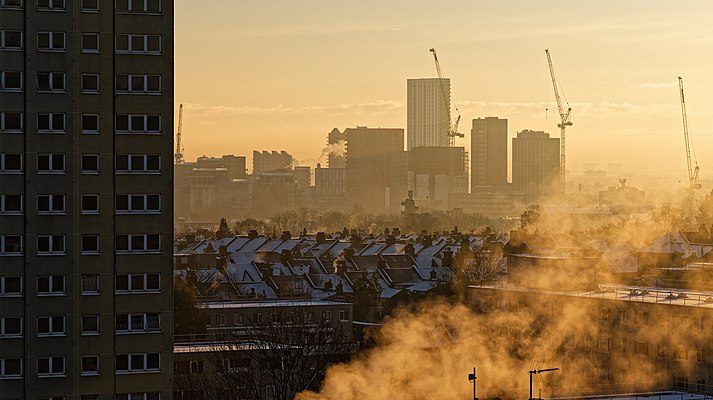
33. Haringey
Haringey is an average sized borough that sits North of Hackney and Islington, and South of Enfield. The borough has a very bad reputation for crime, sitting at the 9th highest crime rate in the city. Gangs can be found across the city in the worst of areas. One of Haringey’s largest faults is its severely deprived and dangerous council housing estates that do not receive consistent funding. The borough is infamous for its “Broadwater Farm Estate” in Tottenham, alongside other severely deprived areas. An upside to the borough is the attractions, Hotspur Stadium in Tottenham and Bruce Castle Museum stick out as notable destinations. The Piccadilly Line and The Overground serve most of the borough.
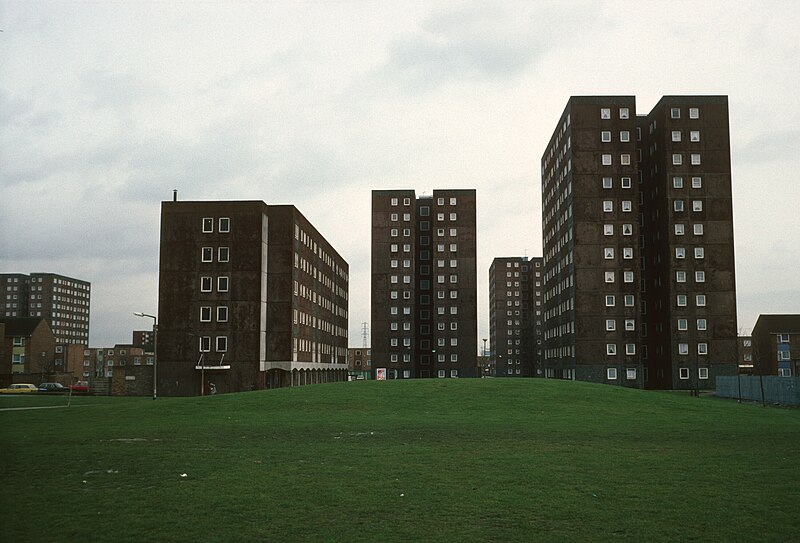
32. Barking & Dagenham
Barking & Dagenham is an East-London borough, East of Newham and West of Havering. Barking & Dagenham is known in part for its enormous deprivation. The borough has an industrial past as an important port area on The Thames, nowadays the borough resembles a depressing, empty, and rundown place. Barking has by far the cheapest housing market, and for a reason, The Harts Lane and Dovehouse Mead Estates, among others, are dangerous and underfunded areas that demonstrate the inequality of wealth and lack of government spending in East London. Racial inequality is a huge problem for Barking due to the populations of poorer housing areas having high numbers of migrants/refugees. Apart from the odd retail park here and there, Barking & Dagenham does not have very much to offer.
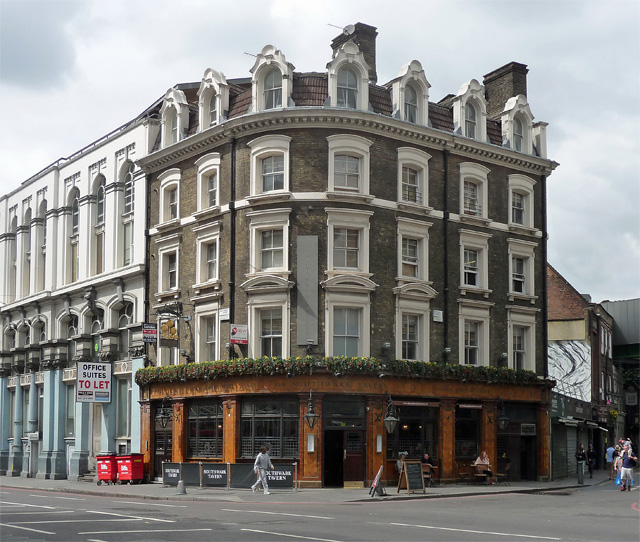
31. Southwark
Southwark is a large London borough in The Inner City Area, Squashed between Lambeth and Lewisham with The River Thames, Tower Hamlets, and City to its North. Southwark has one of the highest crime rates out of any London Borough sitting in 6th place. In the South/Center of Southwark, Peckham and Camberwell are home to some of the highest levels of deprivation in the country with knife crime (usually relating to gang rivalries) a far more frequent occurrence. The Brandon Estate, Aylesbury Estate, and Rye Lane are just some of the dangerous areas that tend to be neglected by government. Much of Southwark has been redesigned in recent years due to the very real danger that certain areas promote. Southwark has access to The Jubilee Line in the North, with The Overground in Peckham and Rotherhithe. Despite having its problems, Southwark still holds many important landmarks including The Shard, Tate Modern, and Borough Market.
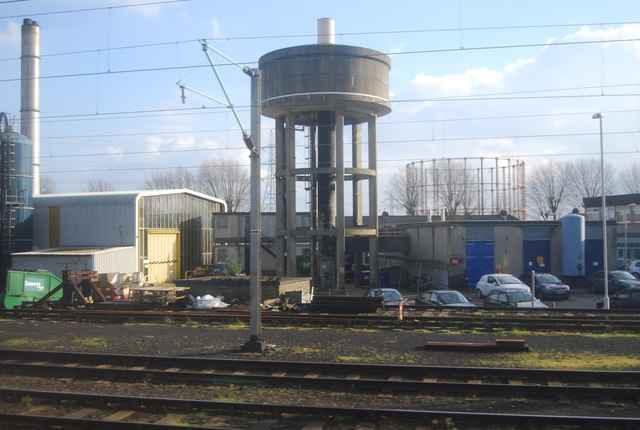
30. Newham
Newham sits North of Greenwich over The Thames, with Tower Hamlets and Barking on either side. Newham has a relatively high crime rate and a record of deprivation that continues to hurt the area. Much of the housing market in Newham has become unaffordable and unsafe. Many Newham homes are extremely badly priced and many are undeveloped, knife crime/violent crime is additionally a substantial problem here. London City Airport is located inside Newham, one of the only two London airports that are actually in London. Stratford and the surrounding area has been heavily promoted in as of late, in the hope that it will bring some economic development to the borough. The ABBA Arena and London Stadium are certainly worth a visit.
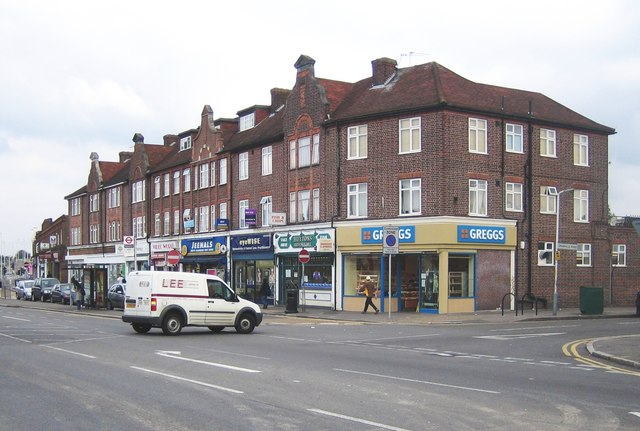
29. Hillingdon
Hillingdon is the second-largest and farthest West borough in London. It shares a border with Harrow, Ealing, and Hounslow to the East. Hillingdon is at the edge of The Greater London area, meaning that most land is either low-density housing or rural. Despite this, Hillingdon has a high crime rate, Willow Tree Lane in Yeading (Eastern Hillingdon) has been known as the most dangerous estate in London on multiple occasions. The standard of living in Hillingdon is low and there are little economic opportunity. Likely the most important feature of Hillingdon is its possession of London’s largest airport, Heathrow, as this provides a good incentive for investment in the area. The Elizabeth and Piccadilly Lines run through Heathrow, with The Central, Piccadilly (again), and Metropolitan Line stopping in Uxbridge and Ickenham.
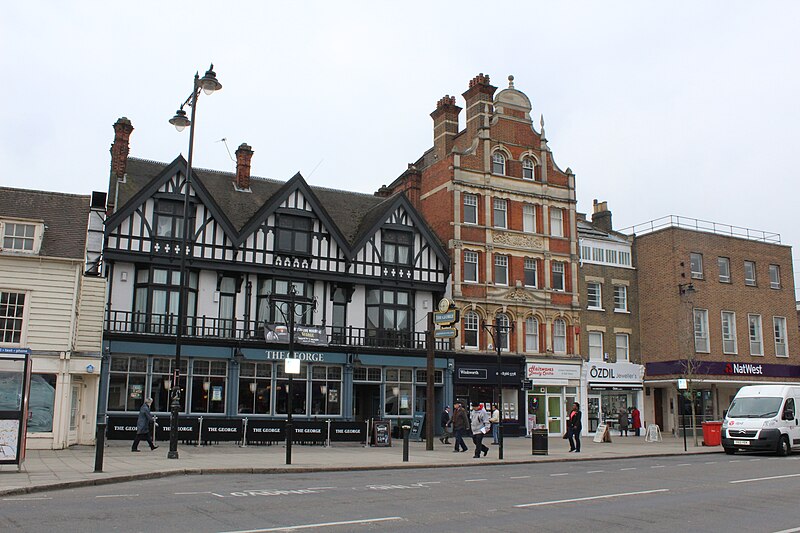
28. Enfield
Enfield is the Northernmost borough in the city, With Haringey and Waltham Forest to its South/East and Barnet to its West. Enfield is among the most deprived areas of London. A built-up high density East, with industry and underfunded council housing, across from the somewhat peaceful, green, and welcoming West end amplifies the inequality of the borough. A part of Southern Enfield named Edmonton is home to The Edmonton Green Estate, which can be known to present high levels of crime. According to The Enfield Council, the borough has risen to 9th most deprived London borough in 2020. However, Enfield does have a notable amount of green spaces compared to other boroughs and some reasonably affordable housing.
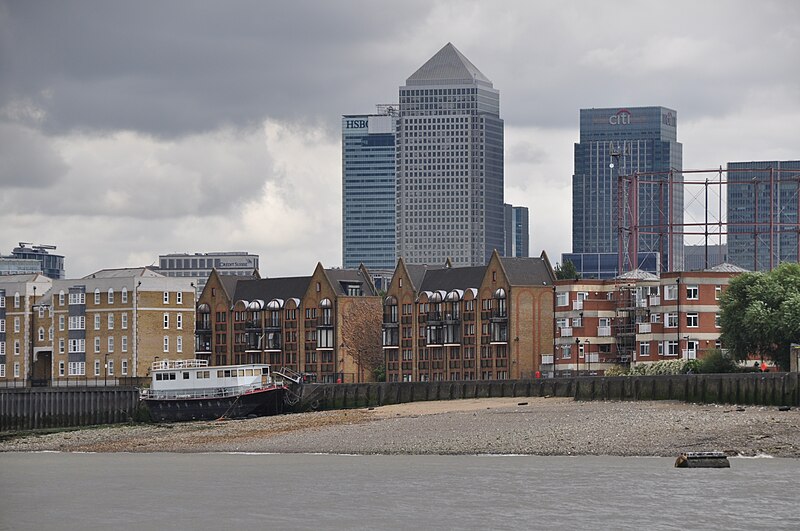
27. Tower Hamlets
Tower Hamlets is to the Center-East of the city, bordering Newham to the East, Hackney to the north, and The City of London to the West. Tower Hamlets is the most unequal borough in London, it also has the highest rate of poverty by far. The borough is most well-known for its financial district, Canary Wharf, a built up business district in the place of previous British docklands. Not only does Tower Hamlets have a high crime rate, it has consistently maintained the title of London’s ugliest borough, due to the overwhelming amount of deprived and outdated high density council housing. Despite this, the borough is still worth a visit with The Tower of London, Crossrail Place Roof Garden, Jubilee Park, and more. The borough does also have a suitable transport network.
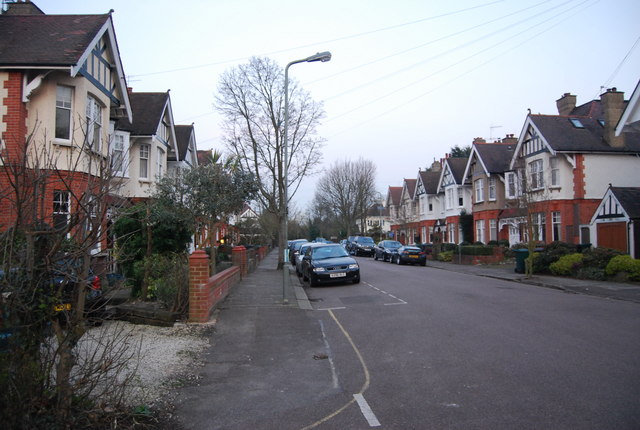
26. Barnet
Barnet sits north of Haringey, Camden, and Brent, in the north-west of London, to its east lies Enfield, and to its west, Harrow. Barnet is a remarkably agricultural borough, leaning out of the urban area and into the British countryside. The borough has a low crime rate due to a very spaced-out and petite population. Gang activity and antisocial behavior is still common in many parts of the borough, council housing is also known to be bare and underfunded in the area. Grahame Park and The Hyde Estate are both areas to watch out for. The Northern Line serves large chunks of Barnet.
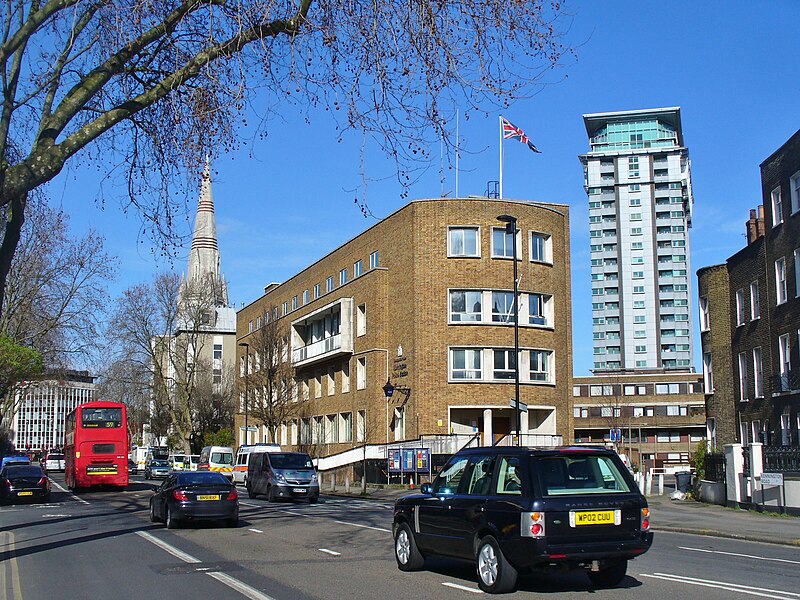
25. Lambeth
Lambeth is an inner city borough in South London sat between Southwark and Wandsworth. Lambeth is constructed of three main parts, South Bank/Lambeth (where the name originates), Brixton/Clapham, and Streatham. Lambeth has feasibly the worst reputation for gang violence and organized crime in the city. PDC and GAS are two of the most dangerous Brixton gangs. Lambeth, alongside Southwark have the highest knife crime rate in London by far. The crime rate in Lambeth is 24% higher than the national average across England. Blenheim Gardens, Cowley, Sackville, Tulse Hill, and more, are just some of the estates to watch out for in Lambeth due to crime and criminal demeanor. With all that being said, Lambeth is still an interesting and beautiful borough, the North of the borough that sits on The Thames has attractions such as The London Eye, County Hall, Waterloo and The Graffiti Tunnel, The Oval, and Brixton Center. The borough makes use of The Victoria and Northern Lines.
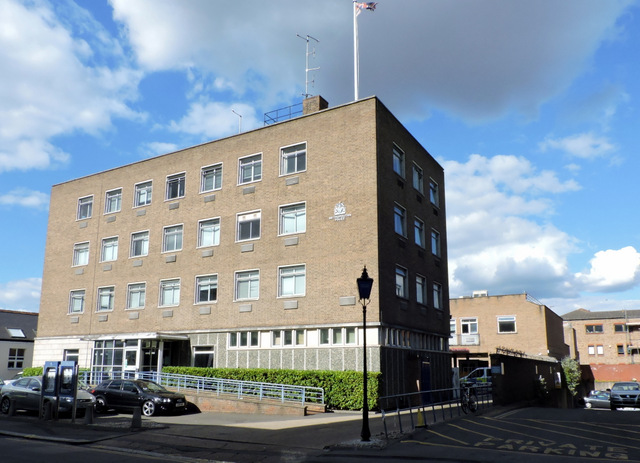
24. Hounslow
Hounslow is a large borough in Western London located above Richmond, under Ealing/Hillingdon. Hounslow is often referred to as “gray”, “boring”, and “ugly”, it is. Hounslow has an average crime rate and low housing cost, however the reason it lands so low on this list is because it is by far the most depressing borough in London. Most of the council estates that operate in Hounslow are visibly underfunded, and there is little to do in the borough. Apart from the small shopping villages near The Thames, parts like Feltham and Cranford are underdeveloped and lack creativity/outstanding qualities. It’s very clear that there is a strong economic division in Hounslow. Attractions to see include: Syon House, Museum of Water and Steam, Chiswick House, and Chiswick High Road. The Piccadilly Line is the only line running through the Central/Southern borough, District and Overground share one stop in Chiswick.
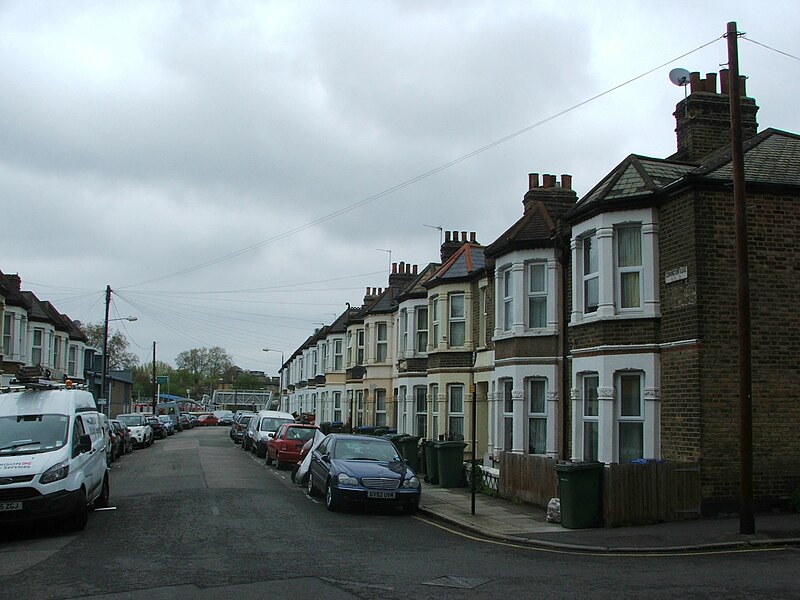
23. Lewisham
Lewisham is a South-London borough, sandwiched between Greenwich and Southwark. Lewisham has undergone redevelopment as of late and has largely been rebuilt during the last century. Lewisham is known for little and is generally seen as an unimportant borough. It has no stations on the tube, a majority of its land consists of single-family homes, and it’s ugly. Like seen in other boroughs of London, Lewisham has a significant wealth divide/inequality. An upside is that the borough does have a reasonable amount of green space. Lewisham shopping center and Horniman Museum and Gardens are the main two attractions.
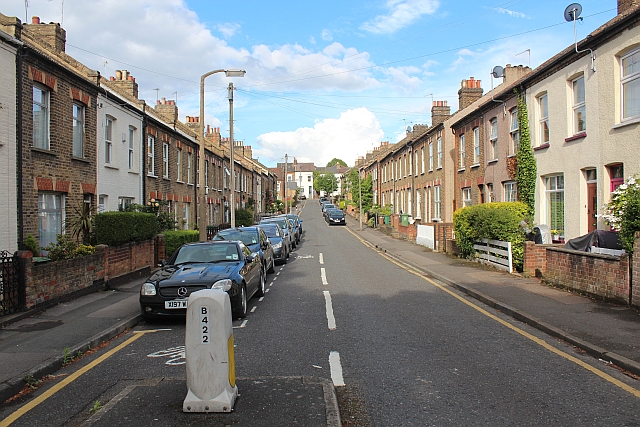
22. Sutton
Sutton is a part of South London, sitting just South of Merton, to the West of Croydon. As it is one of the outer areas of metropolitan London, Sutton contains many patches of greenbelt land and park. Apart from the city center and a few retail parks dotted around here and there, the borough is somewhat empty leaving little to do. Sutton does have one of the lowest average costs for a house in London and a low crime rate, the area, however, is home to deprivation and neglect, easily seen in the council areas/estates. Wandle Valley, Roundshaw, and more have rather deprived living standards and services. The only public transport systems (excluding buses) in Sutton are two tram stations that lead to Croydon/Wimbledon. Aesthetic value is low in Sutton and there is little to do, even in the exciting parts.
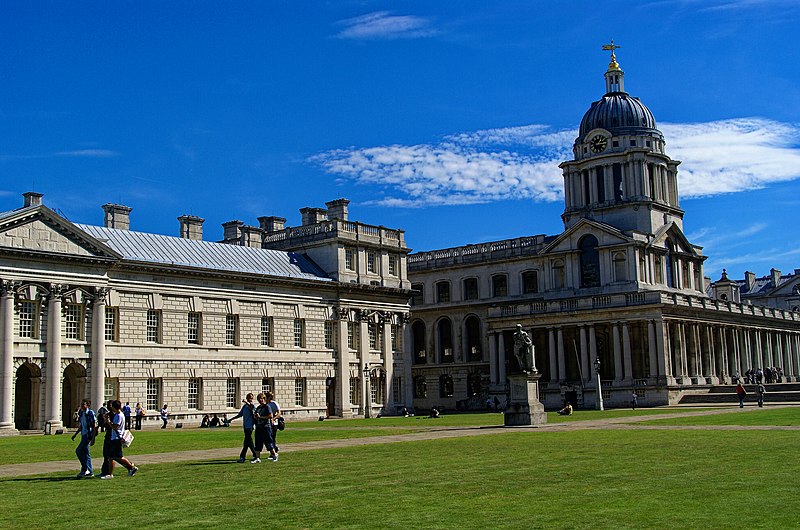
21. Greenwich
Greenwich is a large borough in East London, it has Lewisham to the West, and Bexley to the East. Greenwich is famous for its former maritime docks on The Thames. Now, the borough suffers a lot of crime and poverty. Thamesmead, Woolwich, Abbey Wood, and more are all affected heavily by wealth and opportunity inequality. Thamesmead could well be mistaken for an industrial bomb shelter, the area also has the largest prison in The UK (Belmarsh). Thamesmead and Abbey Wood have become known as some of the most ugly and disadvantaged areas in London. On the other bisection of the borough, to the West, lies Blackheath and The Greenwich Peninsula, featuring copious amounts of homes that are reserved for the wealthy with highly funded and regularly maintained parks, schools, and entertainment centers. Greenwich is a part of the top 20% most deprived authorities in The UK. The Elizabeth and Jubilee Lines both traverse Greenwich shortly, on top of The DLR. Areas of interest in the borough include: The O2, National Maritime Museum, Severndroog Castle, Eltham Palace, Queen’s House, and Greenwich Park.
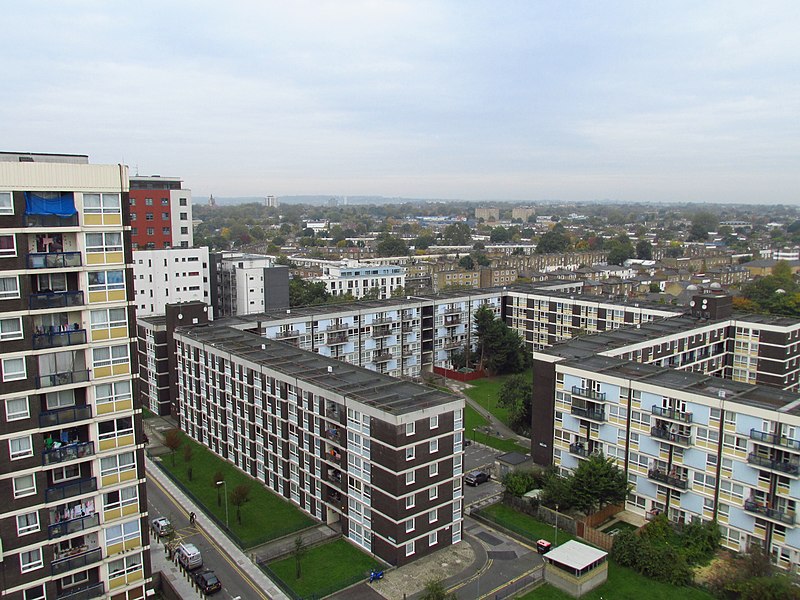
20. Hackney
Hackney is located in North-East/Central London, it shares a border with Waltham Forest and Haringey to the North, with Tower Hamlets and Islington to the South and West. Hackney is an inner-city borough meaning that it is considerably well developed when compared with many others. Hackney, similarly to Islington and Tower Hamlets, is known for its nightlife and vibrant city feel. In the South of the borough lies Shoreditch, a neighborhood that has gained popularity in recent years due to a unique experience and culture promoted by the area. Hackney, regretfully, does have a high concentration of council and community housing and a very high rate of crime. The borough has become known for its crime that has been persistent throughout London’s history. Gang stabbings and acts of violence are common in the densely populated South of the borough. Hackney attracts many people each year to experience the comprehensive urban atmosphere of the area, artistic and political graffiti is prominent across the borough. Attractions include: Regent’s Canal, Village Underground, Hackney Museum, Clissold Park, and Old Street. The Overground serves the whole borough.
19. Bexley
Bexley is in East London, North of Bromley, East of Greenwich. Bexley is arguably the least important borough in London, apart from the minuscule commercial opportunity in the center, it is, in large, completely empty. Deprivation and poverty is common throughout, mostly due to the dead and dying shipping industries on The Thames. Bexley shares Thamesmead and Abbey Wood with Greenwich, it is also home to Slade Green and Welling, all of which are highly deprived areas. Bexley does however, have access to an abundance of green areas and The Bexleyheath Clock Tower.
18. Croydon
Croydon is a large borough in South London that sits between Bromley and Sutton, underneath Lambeth. Croydon has undergone significant redevelopment as of late leading to Croydon Central becoming a principal area for Greater London, financially and commercially. Croydon has a high concentration of violent crime that is gradually decreasing. South Croydon, Purley, Thornton Heath, and other areas around the borough have emerged as centers of crime with typically unfair standards of living that affect the community. Croydon is known also for its extensive tram network connecting the borough and surrounding areas. Lloyd Park, Farthing Downs, Selsdon Wood, and more, make Croydon a ecological area with parks, forests, golf courses, etc. Croydon is certainly a developing destination.
17. Merton
The borough of Merton is located in South-Western London above Sutton and below Wandsworth. Merton has the potential to be higher on this list if it weren’t for the lack of poverty control by the local government. Pollards Hill and Eastfields have just some of the substandard, underdeveloped, and uncatered for housing. Merton’s estates are distinct, as they often underline shockingly bad conditions and low standards of living. To the northern portion of the borough, Wimbledon, low crime and high living standards prevail. Croydon’s tram line runs through Merton in addition to The District Line.
16. Kensington & Chelsea
Kensington & Chelsea is the smallest borough in London, with Westminster to its East and Hammersmith & Fulham to its West. Kensington and Chelsea is by far the richest borough in the city, with over 1.5 million being the average cost of a residence. It also happens to be the most unequal borough in London. exclusivity is a part of the boroughs model in Kensington, many of London’s most prized museums, restaurants, hotels, and houses all exist within this borough. According to MyLondon, Golborne in Kensington is the most deprived ward in London, as the estate contains Trellick Tower that has gained attention due to its brutal style of architecture ever since it was built. Most of Kensington and Chelsea is comprised of segregated mansions and posh Georgian row-houses. Kensington is an inner city borough and a part of The Circle, District, Piccadilly, and Hammersmith & City Lines all operating within the borough. Attractions include: Natural History Museum, Kensington Palace, Victoria and Albert Museum, The Design Museum, Holland Park, and Portobello Road.
15. Waltham Forest
Waltham Forest is a borough in North-East London, West of Redbridge, East of Haringey, and North of Hackney & Newham. Waltham Forest is mostly made up of outer-city suburbs and farmland. Many wetlands, forests, and fields are common throughout the borough. Waltham Forest has a relatively low crime rate, however, it has been subject to moderate levels of deprivation since its expansion. Generally Waltham Forest has little that is appealing apart from low housing prices and access to greenery. The Victoria and Central Lines, plus The Overground, stop in Waltham Forest.
14. Ealing
Ealing is a large borough in West London that finds itself North of Hounslow, South of Brent, and with Hammersmith and Hillingdon on either side. Ealing is known for being a relatively metropolitan area, and a very important one economically. The borough has struggled with the spending in certain areas simply not being treated the similarly, accompanied by an already prominent wealth gap. Ealing is relatively inoffensive when it comes to crime, house pricing, and transportation statistics. Georgian terraced houses can be found in the South and East (Acton) with a thriving economy and interesting atmosphere. Southall, Northolt, Greenford, on the other hand, house many in deprived council estates. Ealing furthermore has some of the worst racial inequality and discrimination in the city. The Elizabeth and Central Lines run all the way through Ealing, with The Piccadilly, District, and Overground, all stopping in the West. London Transport Museum, University of West London, The Mosaic House, and Pitzhanger Manor all stick out as notable landmarks within Ealing.
13. Redbridge
Redbridge sits in North London, East of Waltham Forest, North of Newham and Barking. Redbridge scores well in terms of housing affordability and crime proportions. Redbridge undoubtedly has an advantage over its neighbors. A sizable amount of the borough is agrarian and eco-centered, some parks located inside of the borough include: Valentines Park, Wanstead Park, Repton Park, and Seven Kings Park. Redbridge also has a good reputation when it comes to public services like schools, hospitals, social areas, etc. These benefits allow Redbridge to thrive in standards of living and comprise a happy population. The Central and Elizabeth Lines serve Woodford and Ilford.
12. Brent
Brent is a dense borough in West London that sits North of Ealing and Westminster, South of Harrow and Barnet. Brent is most well-known for having the city’s largest stadium, Wembley. With it comes a prosperous economic zone (Wembley Park) that brings business and economic growth to the region. Brent is mostly comprised of single-family homes in a Federal/Georgian style. Both the Jubilee and Metropolitan Lines run through the North, with Bakerloo in the South of the borough. Despite the positives, Brent still struggles with deprivation and crime in certain spaces. It’s important to research before visiting or moving somewhere.
11. Havering
Havering is a large borough in East London, with Barking and Redbridge to the West and Bexley to the South (it is also the Easternmost borough). The majority of Havering incorporates suburbs and greenbelt reserves with the exception of Romford Central and Rainham. Havering has a bad reputation for its deprived council estates and low public spending, however, it does have a respectable amount of job opportunities, affordable housing, and green spaces. Both The Elizabeth and District Lines run through the area. Overall, Havering is generally a safe and calm area.
10. Harrow
Harrow is to the North-West of the city, North of Brent and Ealing, East of Hillingdon. Harrow is overall not a very eventful borough, however, it ranks highly on this list as it has the lowest crime rate in London (crimerate.co.uk). Rural land can be found to the north of the borough, however, most of it is suburban sprawl. Harrow has relatively average house pricing, with some posh areas in the South. The Jubilee and Bakerloo Lines end in Harrow, with The Metropolitan and Piccadilly passing through the South.
9. Islington
Islington is an inner London borough that sits North of City, West of Hackney, and East of Camden. Islington has gained a good reputation for its lively and popular clubs/social areas. Neighborhoods like Shoreditch, Farringdon, and Angel are rising in popularity with recent generations and have a unique atmosphere about them. Sadly, Islington has a concerning crime rate along with increased quantities of gang activity and violence. Islington is a lot of fun to visit but you will need to be careful about the densely populated areas. Places to see/Things to do include: Flight Club Shoreditch, Emirates Stadium, Old Street, Almeida Theatre, London Canal Museum, The Dome, and Union Chapel. Much of Islington’s neighborhoods contain beautiful greenery and walkways assorted among Georgian and Brutalist architecture. Wealth inequality is strong in Islington, however, political activism in the area challenges those truths frequently. The Northern, Victoria, and Piccadilly Lines are spread across the North of the borough, with The Circle, Metropolitan, and Hammersmith/City Lines stopping in Farringdon.
8. Bromley
Bromley is the largest borough in London and by far the greenest. This makes Bromley a brilliant place to live if sustainability interests you or you want to live a rural/quiet lifestyle. The borough is full of forests and gardens with memorials and parks that serve as great social areas. Bromley, furthermore, has a low rate of crime and somewhat affordable housing. Despite being supplied by The Overground and Croydon Tram Line, Bromley is not brushed by the tube at all. Major attractions in Bromley include: Bethlem Museum of the Mind, Chislehurst Caves, Home of Charles Darwin, and High Elms Country Park.
7. Hammersmith & Fulham
Hammersmith & Fulham is a small borough in West London that sits to the West of Kensington & Chelsea, to the East of Ealing and Richmond. Hammersmith & Fulham is a borough renowned for its stunning Georgian architecture that demonstrates an important period of London’s history. Fulham and West Brompton are perfect for someone who seeks a quiet area and great for raising a family. Hammersmith and Shepherds Bush are known more for their inner-London, urban aesthetic. A downside to the borough is the expenses, it’s exceedingly expensive to visit Hammersmith & Fulham and even more expensive to live there. Here are a few options of places to go in Hammersmith & Fulham: Westfield Shopping Center, Uxbridge Road, BBC Earth Experience, Fulham Palace, Wormwood Scrubs, and Riverside Studios. The borough is served by The District, Piccadilly, Circle, Central, and most of all, Hammersmith & City Lines.
6. City of London
The City of London is categorized separately from the 32 boroughs, the area known as London is Greater London, The City of London is a small district in the center of the city. The City of London sits directly in the center of London with Southwark to the South over The Thames, Islington to the North, Tower Hamlets and Westminster on either side. If the City was a borough, it would be the smallest, despite this, The City of London is still a remarkably important area for a number of reasons. The origins of London trace back to Roman settlement in the area, installing it into years and years worth of history. The city is now a financial district home to Britain’s Stock Exchange, The Bank of England, and countless skyscrapers. All of the modern business centered architecture alongside Romanesque, Tudor, and Georgian buildings make The City of London uniquely complicated in its historic background. It may be very expensive to live in, but it certainly is worth seeing. Some attractions include: St. Paul’s Cathedral, 30 St Mary Axe (The Gherkin), Bank of England Museum, The Fenchurch Building (The Walkie-Talkie), The Barbican, Fleet Street, Guildhall, Central Criminal Court, and Leadenhall Market. The City of London represents British capitalism and stands as a major economic powerhouse for The United Kingdom. The Central, Circle, Waterloo & City, District, Northern, Hammersmith & City, Metropolitan, and Elizabeth Lines, all stop in the city (The DLR also does).
5. Wandsworth
Wandsworth is a borough in South-Western London, it borders Richmond to the West, Lambeth to the East, and Merton to the South. Wandsworth is generally comprised of two sides, Battersea and Putney. Wandsworth has a predominantly calm and clean atmosphere with low crime and friendly people. Housing can get expensive in parts of the borough, but if you can afford it, then it’s worth it. Victorian terraced estates and Edwardian mansions fall between restaurants, parks, and schools. The standard of living in Wandsworth is astonishingly high, and it truly is beautiful. The borough, like many others, still struggles with extreme wealth inequality, thousands are found to be homeless in this borough alone, and there are surely some areas that do not receive the funding they deserve. Some important places to visit/see in Wandsworth include: Battersea Power Station, Putney Heath, Battersea Arts Center, The Clapham Grand, and Battersea Park. The District and Northern Lines stop in Wandsworth, as well as The Overground.
4. Camden
Camden is an inner London borough located North of Westminster, West of Islington, and South of Barnet/Haringey. Camden is an area that is mostly known for the central Camden Town region, known for its vibrant urban aesthetic. Camden High Street is full of creative shops and artwork that makes the place feel alive and unique. South of Camden Town, an older style of city features classical Georgian London architecture mixed beautifully with parks and trees. Many markets operate around the borough, however, the uncontested greatest is Camden Market near the end of the High Street. Other important places which are part of the Camden borough include: The British Museum, University of London, Kenwood House, BT Tower, Karl Marx‘s Tomb, The British Library, Charles Dickens Museum, Russell Square, KOKO, Freud Museum, King’s Cross Station, Hampstead Heath, and The Wellcome Collection. The Piccadily, Northern, Metropolitan, Jubilee, Central, Elizabeth, Circle, Hammersmith & City, and Victoria Lines all stop inside Camden, as well as the Overground. Camden is a beautiful mix of culture, from the lively popular streets of Camden Town, to the relaxed and luxury hotels and residences of Holborn and Covent Gardens, Camden is definitely worth seeing and saying in (if you can afford it).
3. Westminster
Westminster is often seen as the cultural center of London, with the area acting as a pivotal region for The United Kingdom. Westminster sits South of Camden, to its East across The Thames lies Lambeth, to its West, Kensington. Westminster has many setbacks, it has the highest crime rate in the entire city, highest proportion of wealth inequality, some of the most overpriced living standards, and more, but it is also by far the most important region in London and England. Westminster is home to the most expensive estate in the world (Buckingham Palace), the country’s government, and many historic monuments. The South of the borough (Pimlico, Belgravia, etc.) is largely consisting of posh neighborhoods/expensive housing, heading North Westminster is the region home to the king, parliament, and other attractions that will be listed later. Covent Gardens and Mayfair are home to some of the most expensive real estate in the country, the areas are full of shops, academies, hotels, and attractions. Soho is known best for the London Chinatown, home to great food and uniquely interesting streets and architecture, that are very enjoyable to walk around. Then you come to Marylebone and Paddington which are significantly less busy, mostly exclusive properties for the rich. Attractions include: Buckingham Palace, Palace of Westminster (Big Ben), Madame Tussaud’s, Trafalgar Square, Hyde Park, Somerset House, Royal Albert Hall, St James’s Park, Regent Street, Westminster Abbey, Tate Britain, Regent’s Park, The National Gallery, Downing Street, Royal Opera House, Abbey Road, The Ritz, Oxford Street, Westminster Cathedral, The Wallace Collection, Whitehall, Westminster Bridge, London Zoo, Leicester Square, Central Hall, Great Scotland Yard, Bush House, Institute of Contemporary Arts, Churchill War Rooms, and many, many, more. The District Line serves the South of the borough, Circle spans the majority of it, Jubilee, Bakerloo, and Victoria all head North, Piccadilly, Elizabeth, and Central going East to West, with The Metropolitan and Hammersmith & City operating in the North. Westminster is likely the first thing that pops into your head when you ever think about London, as it is generally accepted to be the most important borough/city.
2. Kingston Upon Thames
Kingston is a small outer London borough located with Richmond above it, Merton and Sutton to its East, and The River Thames flowing through. Kingston consistently scores well in the majority of urban statistics, from crime to housing. In the north of the borough the river brings atmosphere alongside the quaint shopping streets and delicate gardens. Green areas for recreation are common across the borough especially as you head South towards the rural outskirts of the city. Local authorities in Kingston generally maintain good living standards for their citizens. The borough manages to keep a tranquil atmosphere while still providing the benefits of urban life. To the Southern areas of the borough lie Chessington and Tolworth among other small suburban areas. Places to go include: Chessington World of Adventures Theme-park, Rose Theatre, Clarence Street, Ancient Market, Claremont Gardens, and The Bentall Centre. The London Underground does not stop in Kingston, however, the South Western Railway does.
1. Richmond Upon Thames
Richmond lies in the South West of the city above Kingston, bellow Hounslow, with Wandsworth and Hammersmith to the East. Richmond has a very diverse array of characteristics and qualities that make the borough interesting. Some of the pleasantest parts of The River Thames are situated in Richmond, the river forms the North-Eastern border of the borough, later splitting the borough in half and shaping the southern portion. The borough can be divided into four main parts: Richmond, Twickenham, Hampton, and Teddington. Together, The Royal Botanic Gardens and Richmond Park contrive a huge portion of London’s greenery; Richmond Park existing as the city’s largest park. Between them both, the small town of Richmond which prides itself on its elegant riverside and impressive architecture. While housing is expensive across the borough, Richmond deals well with poverty and sustains a remarkable level of safety. Twickenham similarly boasts a beautiful waterfront and high standard of living. Seaside restaurants and cafes are familiar throughout these areas. Heading South, Teddington features a slightly more affordable housing market in addition to an interesting High Street. Lush artistic architecture and a strong sense of community finally bring the borough together in Hampton. Places that you must see when in Richmond Upon Thames include: Hampton Court Palace, The Royal Botanic Gardens, Richmond Theatre, Landmark Arts Centre, Church Street, Pembroke Lodge, Strawberry Hill House & Garden, Ham House & Garden, Twickenham Stadium, and The National Archives. Both the District and Overground end in Northern Richmond.